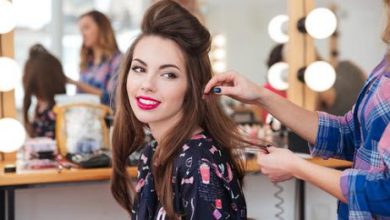How AI and tech will transform the fashion industry?

As one of the world’s largest industries, the global apparel market is generating revenue of $2.25 trillion by 2025. However, if you think of artificial intelligence, this might not be the first industry that comes to mind.
In the competitive world of fashion, designers and brands utilize the latest technologies to push the limits. They do so through design, manufacturing, and production will achieve success.
As more and more businesses become focused on artificial intelligence (AI) in fashion. It will become more and more apparent that these technologies will bring significant changes to all industries. There is no doubt that the fashion industry will have to undergo some changes as well. We look forward to more AI in fashion trends and tech trends in this lucrative industry as online shopping the digital fashion is growing. Additionally, predictive modeling gains more acceptance. AI and technological trends transform the fashion industry. There is an increase in the industry’s revenues increase but so will the consumer experience.
The purpose of this post is to look at some of the trends in AI and tech. This will lead to a huge transformation in the fashion industry.
Predicting fashion trends with machine learning
As brands today aren’t simply designing and developing whatever they deem appropriate, they must consider all its facets. In order to determine the items that will be popular with their customers, they use some important data. Trend prediction can be pretty labor-intensive and time-consuming. Due to gathering and analyze data provided by fashion influencers and designers, the process can be quite profitable.
Fortunately, AI and machine learning has rapidly advanced, meaning predictions are made with little or no manual input. In order to predict what clothing items the customers will like next, machine learning processes the data directly.
Machine learning can predict AI in fashion and its trends. Additionally, the technology is useful for managing inventory, spot trends, and making exceptional business decisions. The use of machine learning in fashion will not only benefit brands in the fashion industry but will also make shopping on the web more convenient for consumers.
As a market leader in using artificial intelligence and machine learning to help brands forecast demand, spot trends, manage inventory, and drive better business decisions, Stylumia provides its platform to help fashion and lifestyle brands.
The shopping experience on the Internet has transformed by AI in fashion, benefiting shoppers during their browsing experience. A B2B solution offering called Virtusize allows brands to build in tools to increase customer satisfaction and reduce returns to the brand through virtual sizing. Since each purchase is unique, True Fit utilizes behind-the-scenes data to help their customers find the right bra fit. The world is taking a new turn of transformation with the help of this new technology.
Automation through AI-guided robots
In the past, many fashion companies relied on experienced designers to create their products so as to provide originality and quality. While time-consuming, this approach was noteworthy.
Nowadays, a variety of fashion products use Artificial Intelligence in fashion through guided robots. As they complete their tasks, these robots ensure the highest quality and uniqueness possible.
As more and more companies use AI-guided robots, we anticipate this trend will accelerate. The rate of production of new fashion pieces will rise dramatically as robots become more affordable. Consequently, human error is reduced which previously costed businesses a lot of money.
Displaying fashion lines through digital models
For the purpose of showcasing their new collections, most fashion brands use human models. The aid of innovation and technology, on the other hand, brings us closer to the point where we can expect to see more virtual models modeling the newest creations of various designers in the near future.
A number of modeling agencies are now working only with virtual models. Fashion brands are going to benefit in a number of ways from digital models.
In a nutshell, this has an important role in waste reduction, because these models can wear clothes that they haven’t even made themselves. Furthermore, it saves time for the brands because they don’t have to manufacture their clothing before displaying it to their hordes of customers.
The virtual models are also useful for brands because they help them deal with restrictions. Many fashion shows are prevented from taking place due to COVID restrictions. In spite of this, fashion brands can still use these models to showcase their products without violating COVID regulations. These digital models have proved be very helpful for AI in fashion and revolutionize this industry in a new way.
Commerce on the go
There aren’t many new trends in mobile commerce, but it tends to get better as time goes on. It goes without saying that this trend revolves around allowing consumers to shop for any product they would like from their mobile devices. Among its many benefits, ecommerce doesn’t just benefit the shoppers, but it also benefits fashion brands by increasing their revenues.
Consumers can now buy anything they want without wasting time by using digital wallet solutions such as Android Pay, Apple Pay, and others. These are all connected to AI in fashion.
About 66% of all millennials have stated that they prefer shopping online rather than in stores. This statistic is disclosed by Big Commerce. Furthermore, there is rise in the number of Gen Z’s entering the labor market and increasing this trend further. This trend is undoubtedly reshaping the world of business and will continue to do so for a long time to come.
Digital shopping for fashion
There are many fashion products are discarded after their usable lives, This is not a surprise that the fashion industry is a polluter of our planet. As a result of this, quite a few fashion companies have been investing heavily in planning to create more environmentally-friendly and sustainable fashion products.
Among the ways that can be done is to build 3-D fashion animations and designs that make shopping easier. The fashion industry does not have to develop products before testing them on their customers in order to get feedback. A fashion brand might get in touch with you, upload your photo to their platform, and you would then be able to pay for the fashion piece. If you adorn the product yourself, the company will send you a picture of you wearing the product. The picture of you wearing the product will provide you with the ability to decide if you like it or not. Furthermore, this application allows you to ask for any modifications that can improve the way the cloth looks on you.
Customer satisfaction will also increase as a result of this trend. The Dress-X company and a few others are already delivering such a service to their customers. While Virtusize offers various fashion brands sizing tools, it operates as a technology company.

Buy digital fashion instead of less.
As one of the most polluting industries in the world, fashion is being best positioned to mitigate these issues by integrating technology solutions, and also trying to work as responsibly as possible.
By designing fashion designs and animating them in 3D, the manufacturer creates interactive experiences for brands. The better way to make a statement without making a big footprint is through selling clothing online. This makes it a potential more sustainable form of marketing for businesses of all kinds.
On the other hand, Dress-X allows people to purchase digital clothes for their personalities online. All you have to do is upload a picture of yourself, make the payment for the clothing, and then you can take a picture of yourself wearing your new apparel. In actuality, you’ll never get to see the item in person or display it at home, but you’ll be able to revamp your online character while also helping to reduce textile waste in the fashion industry.
Fabrics with unique properties
Despite its positive effect on the fashion industry, eco-leather is doubtful of its sustainability. Novel fabrics bring our necessary transformation, which is a good thing. A novel fabric is made from leather in a laboratory and does not use animals. Thus it is an animal-free product.
Several companies are already demonstrating the potential of novel fabrics, including ColorFab 3D, Modern Meadow, EntoGenetics, Bolt Threads, etc. In the near future, novel fabrics will eventually replace eco-leather and other types of leather, making them obsolete.
What is the future of fashion?
The fashion industry is changing in many ways due to technological advancements. From early sketches and fashion shows to the individual online purchasing shopper experience, technological advancements are taking place across most aspects.
While the fashion industry is reducing waste by utilizing digital fashion, automation and predictive modeling are improving customer service.
In the near future, Ai will be able to assist you in purchasing new dresses for your Zoom character, so that you can stop showing up to conference calls in your pajamas and start wearing the latest fashion trends in your PJs




